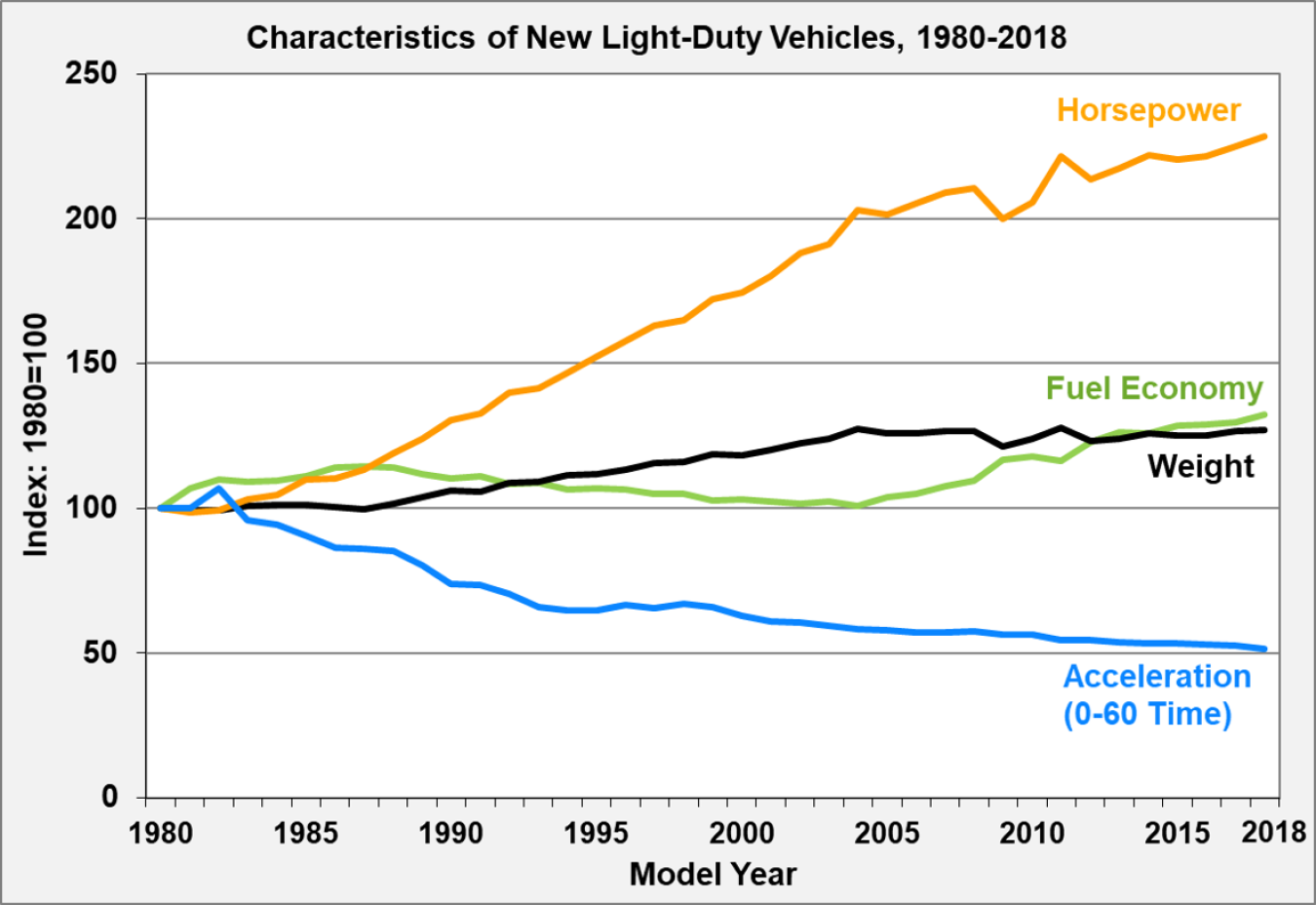In recent years, light-duty vehicle manufacturers have employed advanced technologies to improve both performance and fuel economy.
April 22, 2019In the 1990s and early 2000s, fuel economy decreased while vehicle weight increased. In recent years, however, light-duty vehicle manufacturers have employed advanced technologies to improve both performance and fuel economy. As a result, average fuel economy for all light-duty vehicles produced has improved nearly every year since 2004, and in 2018 rose to a record high of 25.4 miles per gallon. Despite a 128% increase in horsepower and 49% improvement in acceleration from model year 1980 to 2018, the overall fuel economy of light-duty vehicles improved 32% during that period. The data are based on production-weighted averages.

Note: Data are production-weighted averages for each model year and do not represent any individual vehicle. Data for model year 2018 are preliminary.
Source: U.S. Environmental Protection Agency, The 2018 EPA Automotive Trends Report: Greenhouse Gas Emissions, Fuel Economy, and Technology since 1975, EPA-420-R-19-002, March 2019.

